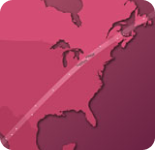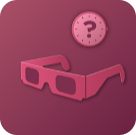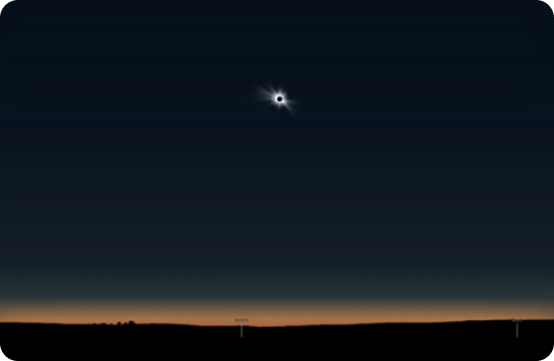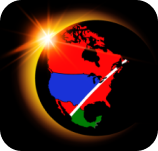We hope you enjoyed it!
is coming to
North America!
...and we want everyone to see it!
with all the rules and protocols for eye safety when observing any solar phenomenon.
What will the 2024 total solar eclipse look like?
Click on the interactive maps below!
They will show you roughly when the eclipse will be happening.
Exact details for MANY more locations are available on our 2024 eclipse cities pages.
Map of the Montreal area, showing the path of totality in gray
Detailed map of the Montreal area, showing the path of totality in gray
(Please note that Eclipse2024.org does not endorse or approve any specific viewing sites related to the 2024 eclipse. Selection of a suitable viewing site, including due diligence, weather considerations, infrastructure, travel, logistics, understanding of time zones, avoidance of trespassing on private lands, and safety considerations, is solely the responsibility of the eclipse observer.)
You MUST use certified eye protection ("eclipse glasses")
whenever ANY PART of the Sun’s disk is visible.



Another total solar eclipse is coming to North America! This
time, totality will also pass over Mexico and Canada – giving people all over North America another chance to experience this great celestial event.
In order to see totality, you have to be in the path of totality. If you aren’t in that path, you’ll only see a partial eclipse. You can learn more about those details with our simple eclipse viewing instructions guide.
This blog post will tell you about the 2024 eclipse as seen from the Montreal area in Quebec. Please check out all the links we’ve provided below to learn more about the 2024 total solar eclipse from other locations.
This blog post will tell you about the 2024 eclipse as seen from the Montreal area in Quebec. Please check out all the links we’ve provided below to learn more about the 2024 total solar eclipse from other locations.
Montreal lies directly on the northern limit of the path of totality for the 2024 eclipse. This means that it is extremely important for you to know where to be on eclipse day, if you want to see the amazing sight of totality!
In general, the farther north and west you are, the worse the view will be from an eclipse perspective.
For example, Laval and Montreal-Est lie well outside the path. Those locations will see a VERY deep partial eclipse, but it’s not the same as totality! The airport will get a bit over a minute in the path,as will the cross at Mt. Royal. Nun’s Island will see about 1m45s of totality, and Rapids Park will get almost two full minutes.
If you’re in Saint-Jean-sur-Richelieu, you’ll get just almost three minutes in the shadow! But to maximize your totality, you’ll need to head to the centerline. In Canada, the centerline is accessible near Mansonville and Ayer’s Cliff (with three and a half minutes of totality). Since viewing locations there might be scarce, you can also visit Magog or Sherbrooke, where you’ll only lose a couple of seconds of shadow time.

 It’s very difficult to describe exactly what you’ll see on eclipse day, because each part of town will see something different.
It’s very difficult to describe exactly what you’ll see on eclipse day, because each part of town will see something different.
The good news is that the southern part of the city, as well as almost all the area south of the river, lies within the path of totality.
 Certainly, from locations not in the path there will be sky darkening, some possibly interesting edge effects, and maybe even a bit of corona. However, if the Sun is not COMPLETELY eclipsed you MUST always use ISO-certified eye protection ("eclipse glasses") to watch the eclipse. That means that, even if these things are going on around you,
if you’re not in the path you won’t be able to see most of them. It will be best for
you to get as far south and east as possible, to make sure you’re in the path and
will be able to see totality.
Certainly, from locations not in the path there will be sky darkening, some possibly interesting edge effects, and maybe even a bit of corona. However, if the Sun is not COMPLETELY eclipsed you MUST always use ISO-certified eye protection ("eclipse glasses") to watch the eclipse. That means that, even if these things are going on around you,
if you’re not in the path you won’t be able to see most of them. It will be best for
you to get as far south and east as possible, to make sure you’re in the path and
will be able to see totality.

Whatever the eclipse brings to your location, it will be most interesting as the shadow passes by - to the south of town, remember!
This will happen right at 3:27pm EDT.

 If you stay in Montreal, please remember the rule for using eye protection during an eclipse: If there’s ANY bright part of the Sun showing, then you have to use your eclipse glasses to watch the event.
If you stay in Montreal, please remember the rule for using eye protection during an eclipse: If there’s ANY bright part of the Sun showing, then you have to use your eclipse glasses to watch the event.
 That means if you can see anything at all of the Sun through the glasses, then the Sun is too bright and you have to leave the glasses on! If you can see absolutely NO piece of the Sun through the eclipse glasses, then it’s safe to take them off. But the second any bright part of the Sun becomes visible again, you have to put them back on – and this can be mere seconds after you took them off. It would be so much better for you to get into the path, and really enjoy seeing totality!
That means if you can see anything at all of the Sun through the glasses, then the Sun is too bright and you have to leave the glasses on! If you can see absolutely NO piece of the Sun through the eclipse glasses, then it’s safe to take them off. But the second any bright part of the Sun becomes visible again, you have to put them back on – and this can be mere seconds after you took them off. It would be so much better for you to get into the path, and really enjoy seeing totality!
We also have an entire section of the site dedicated to providing much more detailed eclipse viewing instructions for you!
Wherever you decide to view from, be sure to plan your route carefully, and watch the weather to make sure you’ll have good skies on eclipse day.

Please be sure to check out Eclipse2024.org’s eclipse simulator for any location you’d like to preview. The simulator will show you exactly what the eclipse will look like for any location you choose!

If you'd just like to preview the eclipse without using the simulator, we've made videos
for the 2023 annular eclipse and the 2024 total eclipse as seen from over 2,200 locations! You can find them on our
2024 eclipse YouTube channel, but we've made it even easier for you - just visit
our eclipse simulator video page to get started!
Eclipse2024.org wishes everyone CLEAR SKIES on eclipse day - April 8, 2024!
Eclipse2024.org wishes everyone CLEAR SKIES on eclipse day - April 8, 2024!
